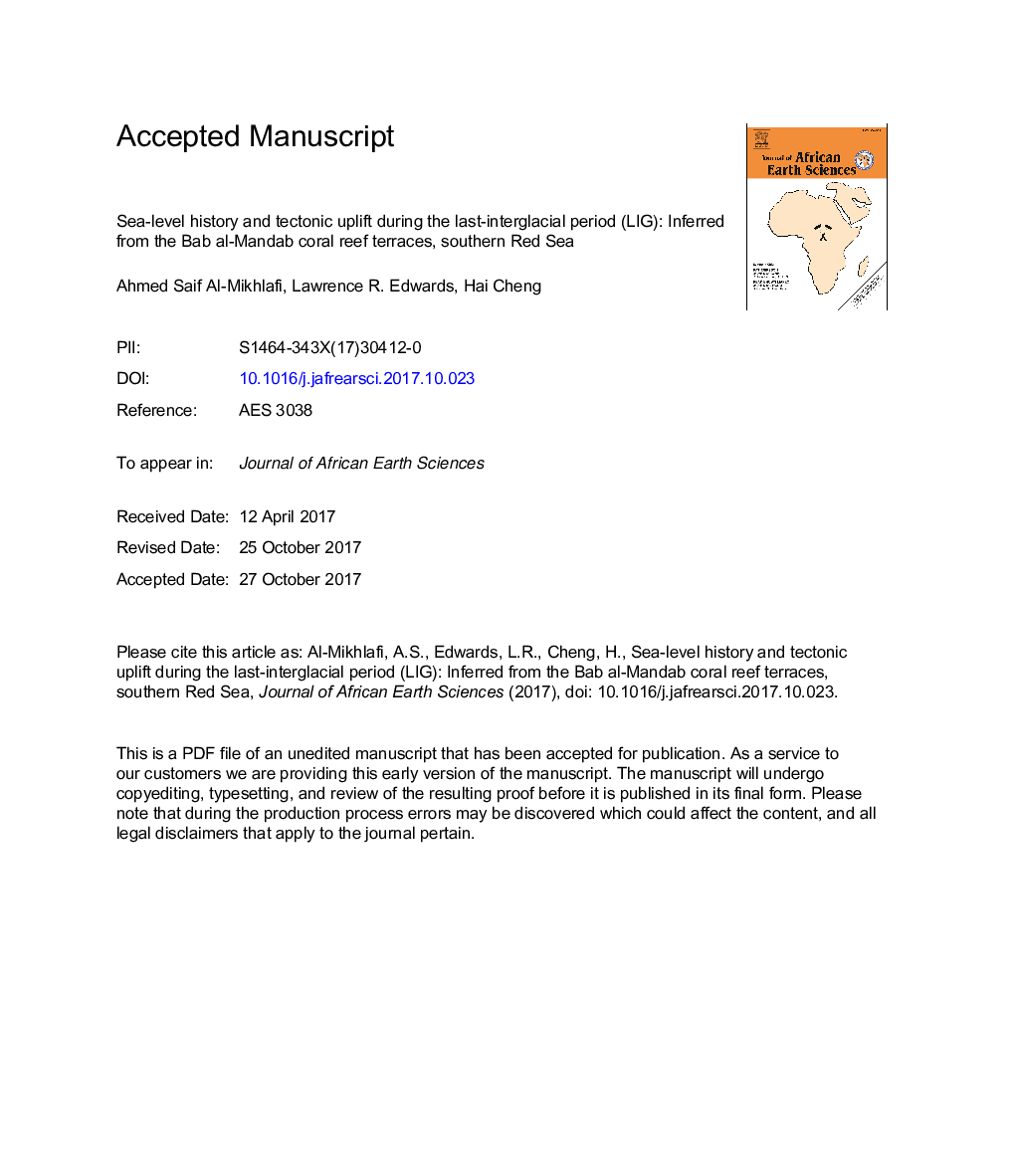| Article ID | Journal | Published Year | Pages | File Type |
|---|---|---|---|---|
| 8913657 | Journal of African Earth Sciences | 2018 | 51 Pages |
Abstract
Results of U-series dating of late Pleistocene raised coral reef terraces from the Bab al-Mandab area, define two distinct groups: (1) well-preserved aragonitic fossil corals recorded from the Al-Hajaja terrace (Tr3) yield ages for last-interglacial period (LIG); and (2) calcitic fossil corals recovered from Perim Island terrace (Tr1) show varying degrees of U-series open system behavior and yield coral assemblage ages of LIG and older ages. Fossil corals from Tr1 are recrystallized corals, have anomalously high initial δ234U ranged from (152 ± 2â° to 287 ± 7â°), corresponding to ages of â¼120 ka and â¼406 ka, respectively. Applying age reliability criteria on the current data suggest majority of the ages cannot be considered reliable and all are suspected for open system behavior associated with U loss/addition that significantly affects the 230Th/U ages. The diagenesis shown by these corals occurred probably due to extensive interaction of fossil corals with freshwater during the wet periods prevailed in southern Arabia coeval with the African monsoon, which led to U loss. Post-depositional U loss suggest (230Th/238U) increase, which shift the U-Th ages to unexpectedly higher levels as it is shown here. Measured elevation at the Al-Hajaja terrace (Tr3) is â¼4 ± 2 m above present sea level (apsl) consistent with eustatic sea level changes and indicates that the Bab al-Mandab area is stable at least since the LIG period. The Perim Island terrace (Tr1) is at elevation of 7 ± 2 m apsl; its reef yields diageneticaly-altered corals of multiple ages and cannot be used for sea level reconstructions.
Related Topics
Physical Sciences and Engineering
Earth and Planetary Sciences
Geology
Authors
Ahmed Saif Al-Mikhlafi, Lawrence R. Edwards, Hai Cheng,
